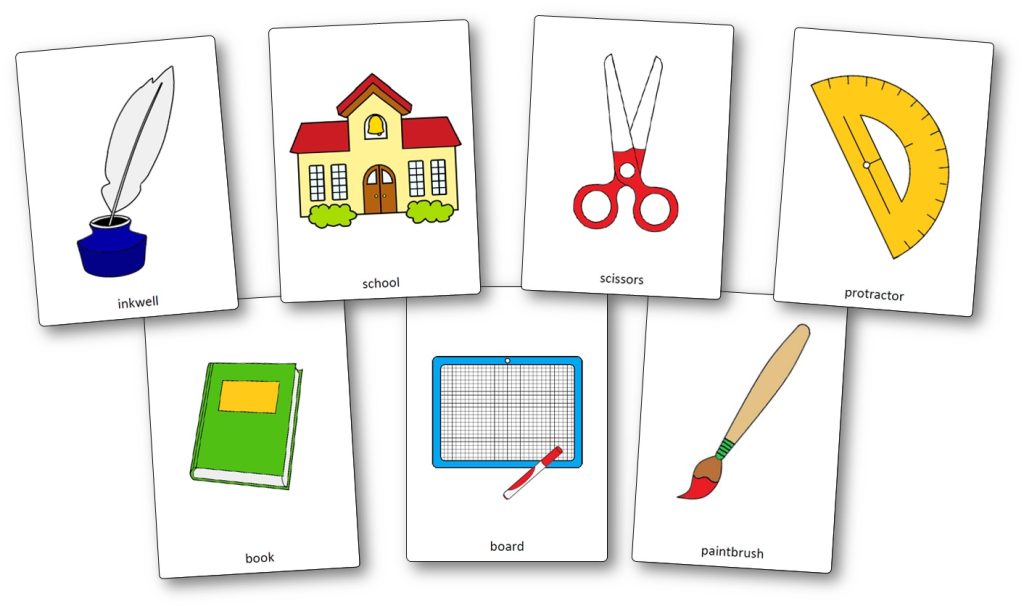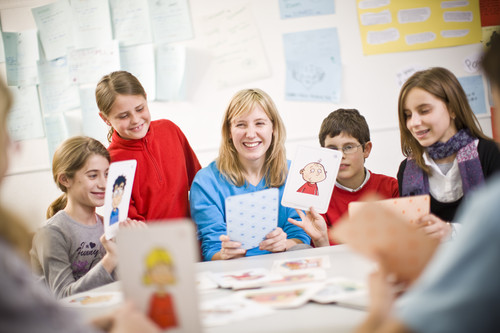Flashcards are a common study tool and, if used correctly, can be one of the most effective ways to learn new information. Flashcards let you test your understanding of definitions and key concepts, which is an important component of exam preparation. However, learning how to create them is as essential as learning about how to use them. So, would you like to know how to make flashcards with paper? This is your guide!
We’ll cover here exactly what makes flashcards such a good study tool. You will know how to make your flashcards with paper, the absolute best method for studying them, and tips to avoid common flashcard mistakes. Thus, any student can benefit from flashcards as a study prompt.
What are Flashcards?
Flashcards are compact note cards used to test and improve memory by practicing retrieval of information. The prompt is usually on one side of the flashcard, while the information regarding the prompt is on the other. Paper flashcards are widely utilized in teaching and learning. However, as the edTech businesses evolve, digital flashcards are becoming increasingly popular.
Why Flashcards are Useful?
Flashcards work best for subjects that cover lots of facts and concepts—for example, history. You need to study dates, names, and definitions. Flashcards can help you to learn foreign vocabulary or math formulas.
What makes Flashcards so effective?
The following are the main reasons on how to make flashcards effective.
Active recall – It means that you have to stimulate your brain for a piece of information. Thus, you look at a flashcard and try remembering what is on the other side. Active recall is the most efficient way to remember something in the long run.
Spaced repetition – You study the things that are hard to remember more frequently than the easy ones.
Activation of different types of memory – You use visual memory when you make flashcards and each time you see them afterward.
Metacognition – You can also use flashcards to practice critical thinking. Divide them into several piles. One pile is the flashcards you know, one is the cards you partially know, and the other is the cards you can’t remember.

How to Make Flash Cards with Paper?
Flashcards aid in quickly memorizing facts, quotes, vocabulary words, dates, and much more. However, flashcards are a great resource to learn virtually anywhere when used correctly! Here is a brief description of steps on how to make flashcards in a better way.
1. Preparing Your Materials –
a) Purchase or make the base cards. Index cards come in different sizes and colors. The standard size is 3 by 5 inches (7.6 by 12.7 cm). You can also get mini flashcards on a binder ring.
- You could also make flashcards if you have lots of blank paper. All you need is a piece of paper or an A4 size sheet and cut it into equal sizes.
- You can also buy a hole puncher and a binder ring for standard-sized flashcards. Most office supply stores sell plastic cases designed for flashcards.
b) Get the pens and other resources. Use a few different colors on your flashcards. Thus, they look attractive. Coloring your notes helps key terms to stand out and be more memorable. However, be sure to purchase a good black pen for the bulk of your writing.
c) Organize your notes before writing your flashcards. Study your class notes or textbook so that you can pick out the key details you want on your cards. It is not wise to put a ton of information on each card.
d) Write a list of what you want to use on your cards. Go through your class notes and write down every fact that you plan to use on your flashcards in the most concise language possible. Include information like dates of important events, names of important figures and what they accomplished. Also, you should include names and brief definitions of important theories.
2. Writing Your Cards
The main things to keep in mind while writing flashcards are:
a) Keep content short. Flashcards aren’t textbooks. You don’t want to overload them with paragraphs of information. When you look at a flashcard, you should be able to absorb the information in a quick glance.
b) Use one term per card. There’s only so much information your brain can absorb at once. To better retain information, only put one term on each card.
c) Write content so both sides of the card can be a starting point. Studies show that the most effective way to use flashcards is to make both sides of the card a potential starting point. This means that instead of having one side of a card be a question and the other the answer, you will need to make both sides of the card have unique information.

d) Add pictures. Studies show that adding pictures to your flashcards will make them more memorable. It only takes our brain 13 milliseconds to recognize an image, which means that putting visuals on your cards will help you remember information faster.
e) Limit your deck to 20-30 cards. Also, don’t overdo it when you’re creating flashcards. Prepare a maximum of 20-30 cards that deal with related subject matter.
3. Using Your Cards
After learning how to make flashcards, you should also know the right ways to use them. Here they are:
a) Set a goal to review at least three times a day. Quiz yourself in the morning, afternoon, and evening to progress as rapidly as possible.
b) Keep your flashcards in your backpack or purse. Make sure your cards are either on a binder ring or in a case. Thus, you can pull them out at lunch, during coffee breaks, on your walk home, or during any other downtime.
c) Find a study buddy and go through the cards aloud together a few times a week.
d) Consider a card done after two days.
e) Simply reciting terms and definitions can greatly improve your chances of remembering them!
However, learn more about using flashcards from this blog!
In a Nutshell
Flashcards are small pieces of paper that people use to learn and study topics actively and recall them at specific intervals of time. These active-recall methods are beneficial when studied over a time span. Moreover, the right kind of recalling methods result in better-revised subjects and help improve grades.
To avoid minor chances of making similar mistakes and losing marks, commonly made mistakes should be taken care of. Thus, Flashcards are a creative source for studying and revising studies actively. This method can lead to improved grades and better student learning capacities. We hope that the blog has taught you well how to make flashcards. Keep the details in mind and create best-in-class flashcards.
Well, if you cannot do it by yourself, take the help of a renowned educational content provider who knows how to make flashcards properly.

FAQs
1. What is a flashcard?
A flashcard is a small set of double-sided information cards that promote the method of active recall during studies.
2. What is the active-recall method?
An active-recall method is a form of separated repetition wherein the information is recalled at intervals to retain data for longer.
3. Can we make flashcards digitally?
Yes, it is possible to design flashcards digitally as well. Different designing apps and software have templates accessible on both systems and mobile devices.



Comments 0